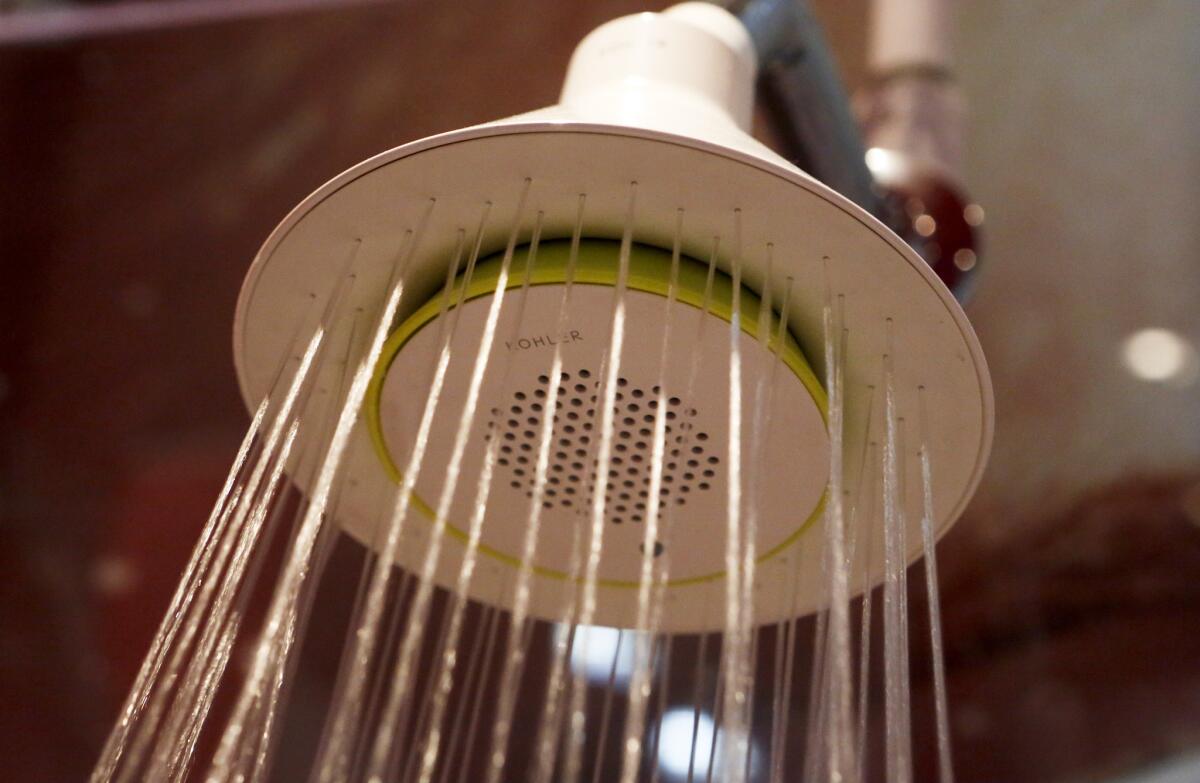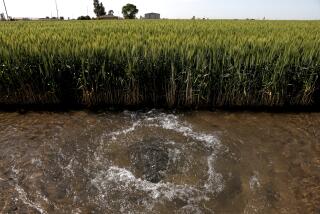California will soon have toughest shower head requirements in nation

The California Energy Commission on Wednesday approved stricter limits on shower heads and bathroom faucets.
Reporting from Sacramento — The flow of water from shower heads and bathroom faucets in California will be sharply reduced under strict new limits approved Wednesday by the state Energy Commission.
Current rules, established in 1994 at the federal level, allow a maximum flow of 2.5 gallons per minute from a shower head.
Effective next July, the limit will fall to 2.0 gallons per minute and will be reduced again in July 2018, to 1.8 gallons, giving California the toughest standard of any U.S. state.
After a full turnover of shower head and faucet stocks by 2029, the regulations are expected to save 38 billion gallons of water, 20.2 billion cubic feet of natural gas and 1,322 gigawatt hours of electricity each year, according to the commission.
Also effective next July, residential bathroom faucets will have a maximum flow rate of 1.2 gallons per minute, down from 2.2 gallons per minute. The standards will save about 154 billion gallons of water in the next 10 years, the commission estimates.
“I just want to point out this is pretty huge,” Commissioner Andrew McAllister said at Wednesday’s commission meeting in Sacramento.
Faucets and shower heads currently count for about a third of all indoor residential water use, said Kristen Driskell, supervisor of the appliances program at the Energy Commission.
Thirty-one percent of showerhead models on the market currently meet the upcoming 2.0-gallon standard, which is known as Tier 1, Driskell said.
The 2.0-gallon limit for showerheads was adopted by the city of Los Angeles in 2009. New York City adopted the same standard in 2010.
California, struggling through the fourth year of a historic drought, will be the first to adopt the standard at a state level.
In April, Gov. Jerry Brown issued an executive order directing the state’s Energy Commission to adopt emergency regulations that would establish improved efficiency standards for water appliances such as shower heads and faucets.
Last month, the commission held a workshop to vet proposed amendments to improve the efficiency of the appliances.
“We are grateful for the energy savings and the water savings that will happen as a result of these thoughtful standards,” Mary Anderson, a representative of Pacific Gas and Electric Co., said Wednesday.
Representatives of the plumbing supply industry also spoke in support of new limits.
Separately, state water officials announced the launch of a $24-million turf replacement rebate program that in part targets low-income communities.
The program will be overseen by the California Department of Water Resources and will offer residents of single-family homes $2 per square foot of lawn replaced for up to 1,000 square feet, the agency said in a news release.
Half of the program’s funds will be earmarked until Oct. 1 for disadvantaged communities, in which the annual median household income is less than 80% of the state’s median household income, officials said.
After Oct. 1, the funds will be open to all residents, regardless of income.
The department will also fund a $6-million toilet rebate program for $100 rebates per household for the installation of high-efficiency toilets in place of older toilets.
The programs are being funded by the Proposition 1 water bond passed by voters in 2014.
The announcement comes about a month after the Metropolitan Water District of Southern California’s highly popular rebate program exhausted its budget after spending $340 million and replacing 170 million square feet of turf.
That program also offered residents $2 per square foot and was initially unlimited until the district’s board set limits, such as a $6,000 cap on residential rebates, in late May.
Residents who previously received rebates in 2014 or 2015 through other government agencies will only be eligible if the previous rebate was for less than $2 per square foot.
If a local water supplier is already offering a rebate of less than $2 per square foot, the state will supplement the remainder up to $2.
For more information and to apply to the program, residents can visit www.SaveOurWaterRebates.com.
Twitter: @kchirbas
Twitter: @taygoldsteinstein
Hoy: Léa esta historia en español
ALSO:
5 days of extreme heat on tap for Southern California
As El Nino grows, drought-stricken California braces for wild winter weather
It’s critical El Niño hits Northern California. Why experts are growing optimistic.
More to Read
Sign up for Essential California
The most important California stories and recommendations in your inbox every morning.
You may occasionally receive promotional content from the Los Angeles Times.











